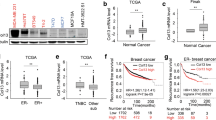Abstract
Breast cancer progression is accompanied by profound extracellular matrix (ECM) remodeling. A greater abundance of aligned fibrillar collagen is characteristic of invasive and aggressive breast cancers and has been associated with elevated activity of collagen crosslinking enzymes, such as lysyl oxidase (LOX) and lysyl hydroxylases (LH) and the formation of more mature collagen matrix crosslinks. Aligned collagen fibers can facilitate metastatic dissemination of tumor cells, and LOX inhibitors have been used to inhibit tumor progression and metastasis in experimental models. Thus, a better understanding of how matrix crosslinking alters tumor cell phenotypes, and behaviors would improve our ability to effectively treat aggressive metastatic breast cancer. Herein described is an experimental approach to glycate and crosslink a collagen-I/basement membrane extract ECM to study the impact of ECM crosslinking on mammary tumor progression in vivo. Moreover, glycation of collagen by sugars to form advanced glycation end products naturally occurs during aging, extending the potential relevance of this approach to research on mechanisms of aging involved in disease progression.
Access this chapter
Tax calculation will be finalised at checkout
Purchases are for personal use only
Similar content being viewed by others
References
Cox TR (2021) The matrix in cancer. Nat Rev Cancer 21:217–238
Acerbi I, Cassereau L, Dean I et al (2015) Human breast cancer invasion and aggression correlates with ECM stiffening and immune cell infiltration. Integr Biol (Camb) 7:1120–1134
Maller O, Drain AP, Barrett AS et al (2021) Tumour-associated macrophages drive stromal cell-dependent collagen crosslinking and stiffening to promote breast cancer aggression. Nat Mater 20:548–559
Peng DH, Ungewiss C, Tong P et al (2017) ZEB1 induces LOXL2-mediated collagen stabilization and deposition in the extracellular matrix to drive lung cancer invasion and metastasis. Oncogene 36:1925–1938
Levental KR, Yu H, Kass L et al (2009) Matrix crosslinking forces tumor progression by enhancing integrin signaling. Cell 139:891–906
Mouw JK, Yui Y, Damiano L et al (2014) Tissue mechanics modulate microRNA-dependent PTEN expression to regulate malignant progression. Nat Med 20:360–367
Salvador F, Martin A, Lopez-Menendez C et al (2017) Lysyl oxidase-like protein LOXL2 promotes lung metastasis of breast cancer. Cancer Res 77:5846–5859
Erler JT, Bennewith KL, Cox TR et al (2009) Hypoxia-induced lysyl oxidase is a critical mediator of bone marrow cell recruitment to form the premetastatic niche. Cancer Cell 15:35–44
Hayward MK, Muncie JM, Weaver WM (2021) Tissue mechanics in stem cell fate, development, and cancer. Dev Cell 56:1833–1847
Northey JJ, Przybyla L, Weaver VM (2017) Tissue force programs cell fate and tumor aggression. Cancer Discov 7:1224–1237
Svensson RB, Mulder H, Kovanen V et al (2013) Fracture mechanics of collagen fibrils: influence of natural cross-links. Biophys J 104:2476–2484
Zeng C, Li Y, Ma J et al (2019) Clinical/translational aspects of advanced glycation end-products. Trends Endocrinol Metab 30:959–973
Ott C, Jacobs K, Haucke E et al (2014) Role of advanced glycation end products in cellular signaling. Redox Biol 2:411–429
Ahmad S, Khan H, Siddiqui Z et al (2018) AGEs, RAGEs and s-RAGE; friend or foe for cancer. Semin Cancer Biol 49:44–55
Zhang X, Claerhout S, Prat A et al (2013) A renewable tissue resource of phenotypically stable, biologically and ethnically diverse, patient-derived human breast cancer xenograft models. Cancer Res 73:4885–4897
Guillen KP, Fujita M, Butterfield AJ et al (2022) A human breast cancer-derived xenograft and organoid platform for drug discovery and precision oncology. Nat Cancer 3:232–250
Girton TS, Oegema TR, Tranquillo RT (1999) Exploiting glycation to stiffen and strengthen tissue equivalents for tissue engineering. J Biomed Mater Res 46:87–92
Paszek MJ, Zahir N, Johnson KR et al (2005) Tensional homeostasis and the malignant phenotype. Cancer Cell 8:241–254
Author information
Authors and Affiliations
Corresponding author
Editor information
Editors and Affiliations
Rights and permissions
Copyright information
© 2023 The Author(s), under exclusive license to Springer Science+Business Media, LLC, part of Springer Nature
About this protocol
Cite this protocol
Northey, J.J., Weaver, V.M. (2023). Extracellular Matrix Glycation and Crosslinking in Mammary Tumor Progression. In: Ursini-Siegel, J. (eds) The Tumor Microenvironment. Methods in Molecular Biology, vol 2614. Humana, New York, NY. https://doi.org/10.1007/978-1-0716-2914-7_15
Download citation
DOI: https://doi.org/10.1007/978-1-0716-2914-7_15
Published:
Publisher Name: Humana, New York, NY
Print ISBN: 978-1-0716-2913-0
Online ISBN: 978-1-0716-2914-7
eBook Packages: Springer Protocols




